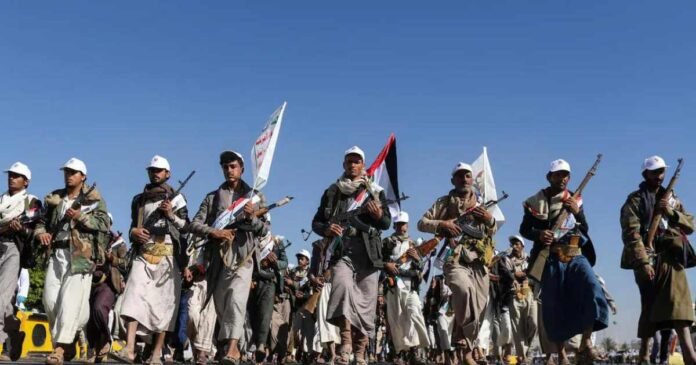In the ongoing conflict in Yemen, where the Houthi militant group has intensified attacks on vessels in the Red Sea, the response from the US and UK has been swift and forceful. These military strikes, coupled with the re-designation of the Houthis as a global terrorist organization by the US, are attempts to pressure the Iran-aligned group to cease its activities. However, a deeper examination reveals that these actions might have unintended consequences and fail to achieve the desired outcome.
The first and most apparent challenge lies in the Houthi movement’s resilience, demonstrated through years of enduring airstrikes. The Houthi political wing, known as Ansar Allah, has been engaged in a protracted conflict with a Saudi-led and Western-backed coalition from 2015 to 2022. Remarkably, the group’s history includes six wars fought against the central Yemeni government from 2004 to 2010, providing them with a profound understanding of guerrilla warfare. This expertise allows them to harass ships off the Yemeni coast without relying on sophisticated weaponry.
The recent war in Yemen was accompanied by a blockade that, despite being in a shaky truce, enabled the Houthis to fine-tune their weapon smuggling networks from Iran. Additionally, the blockade facilitated the development of the group’s domestic weapon production capabilities. The outcome is a Houthi force with a robust military capacity, rendering airstrikes alone insufficient to deliver a knockout blow. Paradoxically, these strikes might even fuel the Houthis’ appetite for further confrontation, as it allows them to frame their actions in the context of resistance against the US and Israel, aligning with their provocative slogan: “God is Great, death to America, death to Israel, a curse upon the Jews, victory to Islam.”
Beyond military considerations, the second critical factor contributing to the likelihood that airstrikes won’t deter the Houthis is deeply embedded within Yemen’s domestic politics. Currently, the Houthis exercise control over significant portions of Yemen, including the capital, Sana’a, where around 70% of the population resides. Despite facing accusations of committing grave human rights violations, including forced disappearances, extrajudicial killings, and the recruitment of child soldiers, the Houthis maintain a grip on power.
The population in these regions has endured years of acute and structural violence at the hands of the Houthis, creating an environment of fear and suppression. However, there are signs of dissent. In protests last year in Ibb and the besieged city of Ta’izz, Yemenis defied the authorities in large numbers, challenging the Houthi rule. The response from the Houthis was swift, marked by an “alarming wave of arrests” and a “draconian show of force,” as reported by Amnesty International.
Paradoxically, the US-led strikes, while aiming to weaken the Houthis, inadvertently granted the group a semblance of legitimacy. These actions, coupled with rising dissent against the Houthis, gave the group a propaganda tool to further suppress criticism and solidify their control. The strikes, rather than deterring the group, inadvertently validated their narrative, making it even harder to dislodge them from power.
The unintended consequences extend further. The strikes can potentially boost Houthi military recruitment efforts. The group’s quest to seize government-held oil wells in Marib becomes a strategic objective for economic sustainability. In this complex dance of power, the US strikes inadvertently contribute to the Houthis’ efforts to consolidate their influence, both politically and militarily.
The third dimension of the challenge lies in the broader regional context. The Houthis’ actions articulate the collective fury of the region against Israel’s war in Gaza and the decades-long Western support for Israel’s policies in the occupied territories. The group has skillfully tapped into profound grievances against Western policies, exploiting the narrative of reinforcing unpopular regimes in exchange for stability in the global order.
The Houthis, by centering their actions on the defense of Palestinians, have found a potent strategy to discredit their domestic opponents. This narrative resonates with a population keenly aware of external influences shaping Yemen’s destiny. The region’s anger against the West’s historical support for unpopular regimes further strengthens the Houthis’ position. This alignment of interests, though rooted in frustration and fury, inadvertently makes the group more resilient and less susceptible to external pressure.
In conclusion, the multifaceted dynamics in Yemen, encompassing the Houthi movement’s resilience, quasi-legitimacy stemming from domestic dissent, and alignment with regional discontent, present a formidable challenge. The US-led strikes, despite their intent, may inadvertently empower the Houthis, making it imperative to reassess the approach and consider broader strategies addressing the underlying issues contributing to the conflict.
